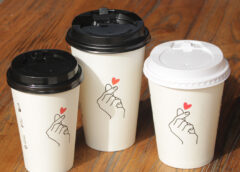We have various products, from single-wall plain paper cups to our newest triple wall “Ultimate” hot cups. The main difference is in the insulation characteristics of the specific cup. We have Plain White or Mocha Single wall hot cups that are ideal for warm drinks, but the hot coffee could be quite uncomfortable to hold without the help of the cup sleeves (available on its own). Because they’re single-wall constructed girls jewelry box target, there isn’t a second layer to protect the beverage’s temperature. Double-wall and hot ripple cups have been specifically designed to endure hot temperatures. The dual layers function similarly to thermos flasks, trapping air while shielding the user’s hands from hot beverages. Additionally, the added strength is ideal for ‘coffee at the go.’ With various high-end beverage providers and coffee chains preferring different materials for disposable cups, it’s interesting to discover which is the most effective insulation.
Perhaps the best method to analyze the insulating qualities of a paper-based cup is to contrast it to another commonly used takeaway cup, like the typical expanded polystyrene model. It is possible to do this through a simple test to see if the paper or polystyrene version held the liquid warmer for the longest time. The test for heat retention involves placing 200ml of extremely hot water in a polystyrene container and the same amount in an old-fashioned paper hot drink container to Gift Box determine which is the more effective insulation. To make a more comprehensive comparison, it is possible to add an actual plastic cup into the equation to see the insulation qualities. Up. We are all aware that each of these hot cups provides a particular degree of insulation, but this test can help you determine the most effective way to keep your liquids warm.
It is possible to use a thermometer to determine whether the fluid is at a temperature. A temperature reading every minute for at most ten minutes and then again for 20-30 minutes will demonstrate that the paper cup is the most efficient insulation. The readings can be recorded as graphs to make your findings easier to understand. In a similar experiment, cup, and food container expert Conte pan found that the liquid in both cups cooled quickly in the first five minutes, between 100 and 90 degrees. But, after this time, the liquid inside the polystyrene cup was cooling more slowly than the paper counterpart, which remained around 80 ° after 25 minutes, compared to the liquid inside the paper cups, which dropped to about 70 degrees.
The results indicate that the polystyrene cups are the most effective insulation and the paper cup comes second. Another cup made of plastic one was tested during the Conte pan test, which showed poor insulation and the water temperature dropping to less than 70°C after only 25 minutes. But some catering supply businesses are now employing double-layered disposable cups with an air pocket to keep heat in and add chateau margaux 1787 layers of protection. Additional tests will need to be conducted to determine whether this gives paper cups an edge over polystyrene containers. Based on the above findings from the above research, we can anticipate the significantly enhanced insulation of ripples and weaves to place them in the first position for this type of study. The ripples function as the thermos flask, significantly increasing heat retention in the cups. Additional tests are required to prove this assertion, however, definitively.
In recent times, there has been an increase in focus on using Biodegradable hot drink cups made of paper. This is a problem since traditional hot drink cups coated with PE utilize non-renewable substances for their inner liner. This lining is needed for making the cups waterproof. Therefore, the only solution to make coffee cups made of paper greener would be to replace the PE-lined lining using an environmentally friendly alternative. The new line with Biodegradable Skin care Box Paper Cups has PLA (Polylactic acid) Lining instead of the standard PLA (Polyethylene) layer. In the past, PLA was mostly used on Plastic Glasses specifically designed to be used with cold beverages. This is because PLA could begin to disintegrate in contact with a hot beverage. The most recent varieties are heat-treated to ensure it is suitable to be used with hot beverages. This advancement has allowed the coating to be suitable for using coffee cups made of paper. Cups.
There’s a lot of incorrect information available on the Internet concerning the advantages of the environment when using PLA coating, particularly about the disposal of the cups in landfills. Contrary to popular opinion, neither PLA and PE-coated coffee cups degrade at landfills. These landfills are made to stop the material from rotting in the sense of rotting since the process releases potentially hazardous methane gasses. One of the main benefits of PLA-coated cups is that the coating is produced from renewable resources. This accounts for around 5percent of the materials used to make a typical single wallpaper cup.

